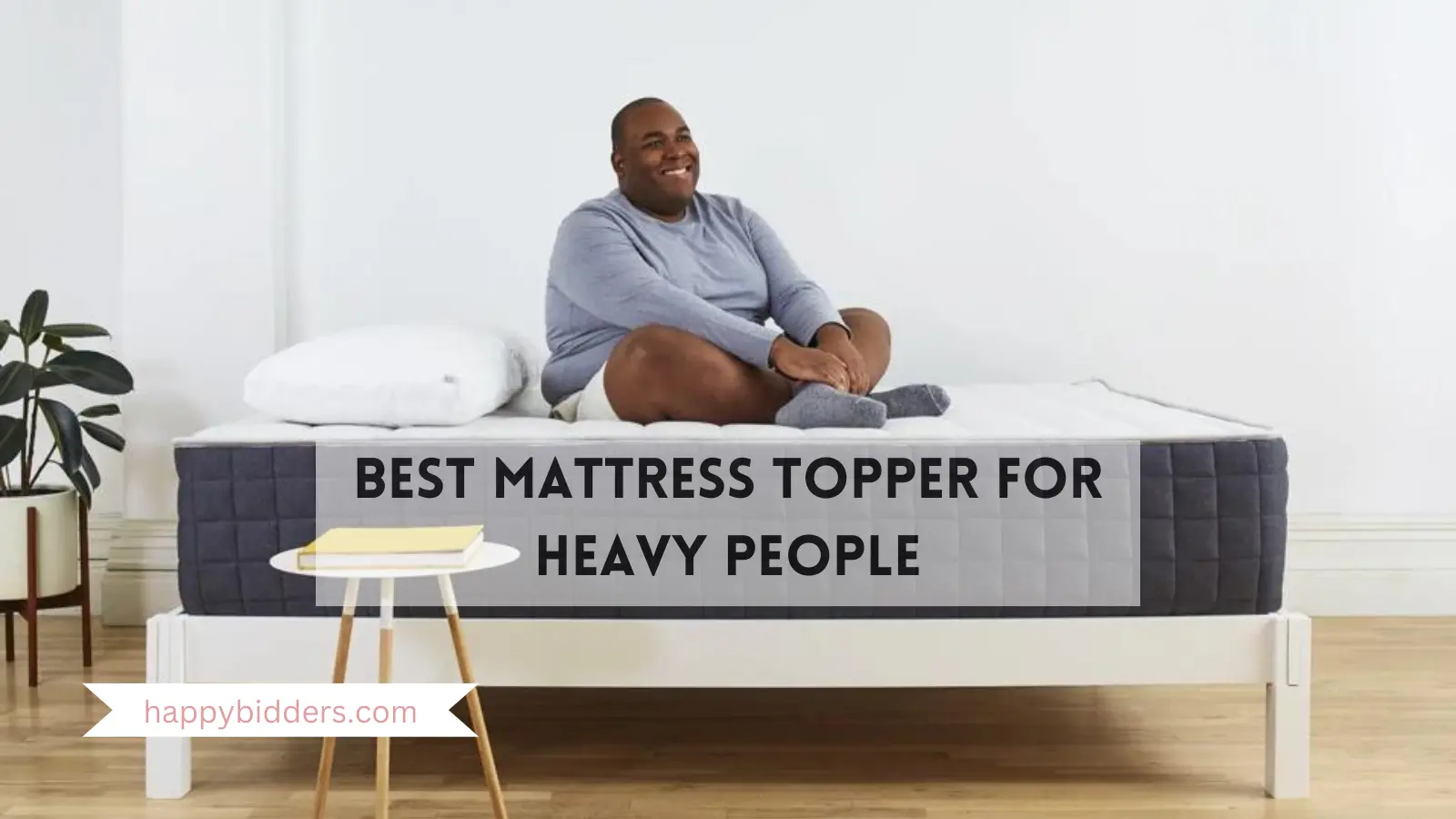In this post, we discuss the best mattress for fibromyalgia. Fibromyalgia can make it difficult to get a restful night of sleep. The chronic, widespread pain associated with fibromyalgia prevents people from falling asleep, and makes waking up throughout the night more likely. Sleep is crucial for managing fibromyalgia (FMS) symptoms, as quality sleep can reduce pain and mental fog. Fatigue is a primary symptom of fibromyalgia, and is often caused by disrupted sleep patterns and other issues common for those with FMS, including sleep apnea and restless leg syndrome.
The right mattress can promote restorative sleep and alleviate some of the symptoms of fibromyalgia. Contouring materials like memory foam and latex cushion pressure points and offer support for aching muscles. Since people with fibromyalgia often suffer from temperature sensitivity, a mattress with temperature-regulating properties can provide comfort.
This guide includes our top picks for the best mattresses for fibromyalgia, what to consider before making a purchase, and other sleep accessories that can provide additional comfort. We also take a closer look at how fibromyalgia affects sleep and provide tips for improving your sleep quality.
Best Mattresses for Fibromyalgia: Buying Guide
Before buying a mattress online, there are unique factors that people with fibromyalgia should consider. Selecting the right mattress may seem complicated, especially when there are different firmness levels, mattress types, and features available. Those with fibromyalgia will benefit from a mattress that provides full-body support, pressure point relief, and temperature regulation. This guide will help you determine what to look for when shopping for a mattress.
How Does Fibromyalgia Affect Sleep?
Fibromyalgia and sleep have a complicated relationship. The pain and discomfort of fibromyalgia can cause sleep disturbances, making it difficult to sleep through the night. People with fibromyalgia also tend to be more likely to suffer from disorders like sleep apnea and restless leg syndrome. These complications prevent quality sleep, resulting in fatigue and mental fog. Poor sleep can exacerbate fibromyalgia pain and other symptoms. On the other hand, getting quality sleep can reduce symptoms.
The widespread musculoskeletal pain of fibromyalgia is likely caused by how your brain and spinal cord communicate pain signals. An increased number of neurotransmitters signal pain, which makes the body more sensitive. There is not a known cause for this, though there are certain risk factors. Genetics may play a role, and women are more likely to suffer from fibromyalgia. Additional risk factors include abuse and trauma, mood disorders, infections, and physical inactivity.
Fibromyalgia is typically diagnosed after a person experiences three months of chronic, widespread pain. Other conditions with similar symptoms are first ruled out with blood work and other tests. The main symptoms of fibromyalgia include musculoskeletal pain throughout the body, fatigue, loss of mental focus and concentration.
There are treatment options available, though there is no known cure. You should consult with your doctor to determine the best course of action. Common treatment plans incorporate prescription medications, including anti-seizure medications, antidepressants, muscle relaxers, and sleep medications. Regular exercise can help control symptoms and improve sleep. Alternative medicine options include massage and acupuncture. These methods can reduce pain and ease muscle tension. Chiropractic adjustments may be used to relieve pressure points. Mental health counseling and therapy can also help. It is important to note that there is not a one-size-fits-all approach to treating fibromyalgia, and each person has unique needs and preferences.
What Type of Mattress Is Best for People with Fibromyalgia?
Since fibromyalgia causes widespread pain, a mattress with proper support can relieve tension throughout the body. Materials like memory foam and latex contour to the shape of the body, cushioning pressure points and easing pain. People with fibromyalgia may be sensitive to noise, so the amount of noise the mattress makes when bearing weight should be considered. Motion isolation can prevent further sleep disturbances throughout the night, especially if the bed is shared with a partner.
Memory foam and latex mattresses tend to be popular for those with fibromyalgia and chronic pain, as these materials offer a customized feel and relief for aching muscles and joints. Hybrid mattresses with latex or memory foam comfort layers have similar benefits, with added airflow and support from innerspring coils. There are pros and cons to consider for each type of mattress, which are outlined in the table below.
Foam
Latex
Innerspring
Hybrid
A memory foam mattress is made of comfort layers of viscoelastic memory foam and a polyfoam support base. Memory foam is known for its responsiveness. It conforms closely, relieving pressure points and promoting proper spinal alignment. Since memory foam responds to heat and pressure, it has a tendency to retain heat and restrict airflow around the body. This can result in the feeling of sleeping hot. However, some memory foams feature an open cell structure, or are infused with gel, copper, or graphite, to offset heat retention and provide a cooling feel.
Average Price:
The average price of a memory foam mattress ranges between $500 and $1,000. High end luxury models can cost up to $4,000. The price is determined by the quality of the foam used, as well as the construction.
Pros for People With Fibromyalgia:
- Memory foam conforms closely, relieving pressure points and reducing widespread fibromyalgia pain.
- Movements are absorbed by memory foam, preventing motion transfer. It is also silent when bearing weight.This reduces sleep disturbances for those with fibromyalgia.
Cons for People With Fibromyalgia:
- Memory foam has a tendency to retain heat and restrict airflow, which is not ideal for people with fibromyalgia who are sensitive to hot temperatures.
- Lack of edge support can cause sagging along the perimeter over time and inconsistent support, especially for those who sleep or sit on the edge of the bed.
Important Factors to Consider When Buying a Mattress
The right mattress can alleviate symptoms associated with fibromyalgia and provide much-needed comfort. People with fibromyalgia have unique needs, and everyone is different. Some experience sensitivity to heat, while others are more sensitive to cold. This makes a mattress with temperature neutrality ideal. Fibromyalgia can also cause restlessness and general discomfort. Supportive, contouring materials can cushion pressure points, which relieves aching joints and tense muscles. The following elements are essential considerations when searching for the best mattress for fibromyalgia pain.
- Support: Support measures how well a mattress keeps the spine in alignment by providing even, consistent support. The mattress should not have indentations or sagging. A supportive mattress reduces back pain, which is important for people with fibromyalgia and chronic pain. Support tends to come from the base of the mattress, while the top layers provide comfort.
- Contouring: Contouring materials like memory foam and latex conform to the shape of the body. This cushions pressure points and reduces pain. Memory foam is especially conforming, which gives the feeling of being hugged or sinking into the mattress. However, this can restrict airflow, resulting in the feeling of sleeping hot. Latex is more breathable and contours gently.
- Firmness: Whether you choose a firm or soft mattress for fibromyalgia will depend on several factors, including your body weight and sleeping position. Mattress firmness is subjective, and is typically rated on a scale of extremely soft (1) to extremely firm (10). Most mattresses fall in the middle of this scale. Side sleepers and lightweight people tend to prefer softer mattresses, which provide additional cushioning. Back sleepers and those of average weight may want a medium or medium-firm mattress, while stomach sleepers and heavier people might need a firm mattress.
- Motion Isolation: Motion isolation prevents movements from transferring from one side of the bed to another. This reduces the likelihood of being disturbed by your partner’s movements throughout the night if you share the bed. Memory foam isolates movement exceptionally well, while innerspring mattresses tend to transfer movement.
- Temperature Regulation: Heat and humidity can cause fibromyalgia symptoms to flare up. Cold temperatures can also affect symptoms. A temperature neutral mattress is ideal, as it prevents either extreme. Temperature regulation can help keep people with fibromyalgia who are sensitive to temperature fluctuations comfortable.
- Edge Support: Edge support ensures the mattress provides consistent support, whether you sleep in the center or closer to the edge. It also prevents sagging along the perimeter over time and makes it easier to get out of bed. Innerspring and hybrid mattresses tend to have reinforced perimeters, while foam mattresses are more likely to sag along the edge over time.
- Noise: People with fibromyalgia may be sensitive to noise. If the mattress makes noise when bearing weight or changing positions, this can cause sleep disturbances. A latex or memory foam mattress is typically silent when bearing weight. Mattresses with innerspring layers are more likely to make noise.
- Price: A new mattress is an investment, and can range in price from $500 to $4,000 or more. It is important to determine your budget before shopping. Keep in mind that high-quality materials and construction increase the durability of the mattress, as well as the price. As these mattresses tend to last longer and provide consistent support, they can be a valuable investment.
Sleep Help and Tips for Fibromyalgia
Poor sleep can make fibromyalgia symptoms worse. People with fibromyalgia tend to spend less time in deep sleep, which can result in mental fog and fatigue. It is a frustrating cycle, since poor sleep exacerbates fibromyalgia symptoms, while symptoms can prevent people from sleeping well. Finding the best mattress for back pain is an important step for alleviating fibromyalgia pain. The following tips may also help improve sleep quality.
- Exercise regularly: Moderate exercise strengthens the body and can relieve pain. To avoid added pressure on the joints, low impact exercise like swimming, stretching, or walking is typically recommended. Yoga and tai chimay also help with pain management and relief. Regular exercise can also improve sleep quality. Working out in the morning or afternoon is preferred, as exercise can be too stimulating if done close to bedtime.
- Ask your doctor about vitamin D: Recent studies have shown that vitamin D can reduce pain and fatiguecaused by fibromyalgia. It also improves sleep quality and regulates the musculoskeletal system. While you can get vitamin D from sitting outside in the sun, you may need supplements, especially if you live in a place with less sun or are worried about the risks of sun exposure. Talk to your doctor about your diet and how to best get more vitamin D.
- Reduce stress: Managing stress is especially important when you have chronic pain. Stress can make symptoms worse and cause fatigue. Set clear boundaries and avoid over-committing. Mindful meditationcan help with the psychological symptoms of fibromyalgia and may relieve pain. Breathing techniques and meditation can also encourage restful sleep.
- Set a routine: A consistent routine will help your body prepare for bed every night, and can make it easier to wake up in the morning. Waking up and going to sleep around the same time each day helps people develop a natural sleep-cycle pattern. It is also important to create a bedroom environment that is conducive to sleep. The bedroom should be dark, quiet, and comfortable.
- Consult with medical professionals: Explore treatment options with a doctor or medical professional. Prescription medications can relieve nerve pain and help with sleep disorders. There are also physical and mental therapy options that can help with symptom management. Alternative medicine, including acupuncture and massage, offers natural methods for pain management and relief.
Please remember that while our guide is thorough and well-researched, it is not a replacement for medical advice. Always consult your doctor or qualified physician with any questions or concerns you have regarding medical conditions, treatments, and advice.
Additional Sleep Accessories for People With Fibromyalgia
Selecting the right mattress is essential for quality sleep, and is likely the most important investment someone could make for their sleep health. While the mattress provides support and comfort, the following accessories can further customize the feel of your bed. They may also help alleviate fibromyalgia symptoms.
Pillows
Head pillows help keep the head and spine aligned, which relieves pressure on the neck and shoulders. For people with fibromyalgia, the best pillows provide additional comfort and support. Pillow loft depends on the amount and type of fill used. People who sleep on their side may need a higher loft to keep their neck and spine aligned, as it needs to fill the space between their neck and shoulders. Back and stomach sleepers tend to prefer a lower loft.
Body pillows are larger pillows that typically have a long, adjustable shape. These pillows can be used to cushion tender areas or aching joints. Since fibromyalgia causes pain throughout the body, a body pillow can offer targeted support that relieves pressure in specific areas. It can also be used to prop up the legs or arms and can be adjusted as needed.
Mattress Toppers
A mattress topper is a thick comfort layer that sits on top of a mattress. This is an option for people who are not ready to buy a new mattress, but want to change the overall feel of their current one. Mattress toppers are thicker than mattress pads, and typically add 1 to 3 inches of material to your existing mattress. They are secured with straps or a fitted sheet.
Mattress toppers made with latex or memory foam are ideal for people with fibromyalgia. These materials contour to the shape of your body and relieve pain. Thicker mattress toppers tend to provide more cushioning, though they can vary in firmness and comfort levels. Mattress toppers can improve temperature regulation if they are made with breathable materials. Foam and latex also help isolate movements and prevent disturbances throughout the night. Like mattresses, mattress toppers can be made with a variety of materials that provide different benefits.







